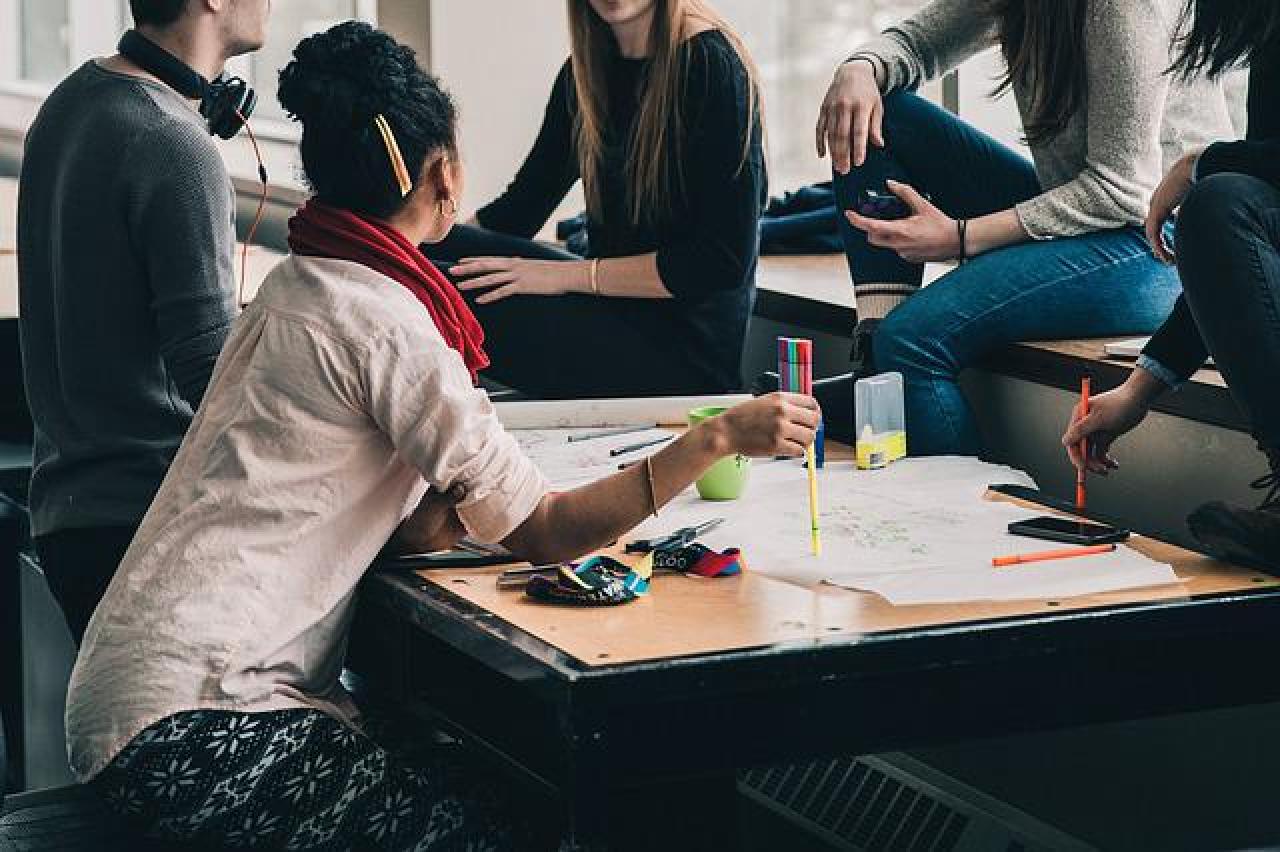
Participatory planning, co-creation, co-management are fashionable “buzzwords” when you ask city practitioners on the recent trends in urban planning and development. And they are right: the best way to plan for an inclusive, green and also prosperous city development is to meet the needs of its stakeholders, its population. This means of course involvement, the earlier and the more integrated the better. But what is needed to accomplish planning with and for people? One of the answers to this is an obvious and at the same time a challenging one: it is communication. With stakeholder, with residents, with population groups. On their needs, their concerns, their ideas, their vision for coming development steps. So, what can be done for a good communication a city’s diverse stakeholder and population setting?
Certainly, the answer to this question is neither an easy one nor golden key solution that works for all locations and situations. And there is another important question: what is communication? Very often information is confused with communication. While information simply accumulates scientific or administrative expertise, communication must be user-centred and action-oriented. It becomes completely difficult if someone does not communicate in an action- or user-centred manner but offers officially knowledge only or even advertises one's own party politics. Thus, in an ongoing process, it is important to find out constantly which questions are open in which population groups and which information is being sought and missing. Communication should be target group specific and easy to understand, but also contain interpreting services and translation assistance. Otherwise, specific target groups won´t be reached, i.e., elderly people or people with a low level of education and a poor socio-economic status.
Therefore, we in Space4People created local approaches to communication and prepared individual strategies centring around the integrated planning process cornerstones. Which needed a major adaptation soon once COVID19 dramatically changed the rules of the game, of course. Still, we revamped plans and methods to use local communication activities to exploit options as they were at hand. And our cities used a variety of solutions to come up to this one central element of an integrated planning process: to communicate with stakeholders.
One popular idea was to combine local communication with outdoor events. Like our Greek partner, the City of Serres, who performed a public voting on which option to choose for piloting as a small-scale activity. The Space4People team presented the ideas using a stall in public space during the European Mobility Week 2021. By-passers got addressed with the network topic and the activities of Serres. They were asked to give their opinion whether to focus on upgrading of public space using greeneries, shading and high-quality materials, or on improving road safety conditions by signalling and route marking, or on better digital information supply to plan trips. The result was that contributors favoured a small-scale activity on road safety conditions by signalling and route marking slightly over upgrading of public space. Serres complemented the on-site survey with an online option and received all in all 61 entries.
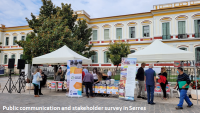
Like Serres, our Romanian partner, the City of Arad, employed public space events to run its local communication actions. But Arad did not focus on deciding on small-scale activities but used these directly as the event to get people out on the street. In a first step, Arad closed a section of its main road crossing the centre – the Boulevard Revolutionary – and held a public event with food stalls and retail offers on the road in August 2021. The local team used the high number of visitors to ask for their ideas on how to change the use of the Boulevard itself. To their own surprise, a full pedestrianisation of sections of the very boulevard was the top answer. Asking for details, answers varied from a permanent closure of sections of the boulevard to experimental actions first or time-limited closures as during weekends only for the entire year or during the warmer months of May to October.
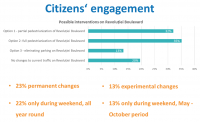
In a second action, the Arad ULG team made a second effort to get ideas for what installation and elements people want to see in pedestrianised streets. This co-creative action presented a larger set of options and by-passers were invited to select items they want to see using a set of “playcards”. The most popular options to place in public space – not barely the boulevard but as well other streets subject to pedestrianisation – were to place food trucks, use greeneries, light installations, shading and seating options as well as outdoor libraries and colouring the surface.
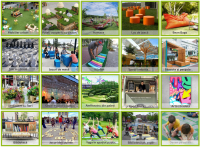
Main takeaways for the Arad team were that citizens want a pedestrianised and vibrant city centre. Walking however is today seen as a leisure activity and more prominent during weekends and warmer weather conditions. The pilot interventions proved valuable to inspire people and to establish a level of trust to the planned activities.
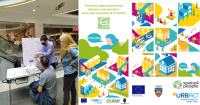
A different approach to gather the views and opinion of local stakeholders and populations groups was driven by our Spanish partner Guía de Isora. The specific case was the evaluation of the small-scale activity in Guía de Isora Casco. This activity centred on the redesign of an access road to the very inner city that got turned from a plain road with one lane for each direction to a one-way street adding dedicated parking areas, a two-direction bicycle lane and more space for pedestrians. To learn the views of the road users, but as well others, Guía de Isora employed an online survey. The survey got published using instant messages to residents and entities located in the street, press releases, the municipal website and in-person information on the survey at key areas of the municipality.
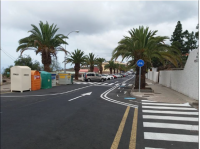
The survey itself address if people were aware on the pilot, how they perceive it and how it affected their mobility. Results showed a high awareness (92% of answers) on the pilot. Respondents appreciated the rearranged provision of parking spaces and the expansion of pedestrian space the most, while the cycling lane and the one-way street met less agreement. Still, only 3 out of 10 persons said that their mobility was impacted by the pilot.
Guía de Isora’s further take aways from the survey were that a large majority of people welcome pilots for testing changes to traffic and more than half of respondents favour to turn the pilot to a permanent solution. As a consequence of the pilot and its evaluation, Guía de Isora is to keep the new traffic scheme for the road and to add a better connection for the bicycle lane to other areas of Guía de Isora Casco.
Using online survey and communication took a prominent role in the communication activities of our German partner, the City of Bielefeld, too. But Bielefeld use it as an integrated element in a series of participation elements on pilot interventions in its old town area. For this area, Bielefeld is running a development process called “altstadt.raum” aiming to reduce traffic in the old town and increase options for socialising, recreating, for play, for more outdoor gastronomy and sales as well as for more safety and security.
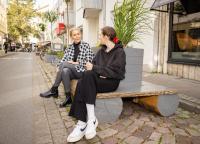
Since the old town area serves a multitude of functions and needs, the City of Bielefeld employed a range of participatory elements to identify locations and relevant actions to test. A first participation phase of workshops starting 2021 was used to establish the locations and measures with stakeholders such as retailers, gastronomies, schools, NGOs, residents, parking garage managers, real estate owners and the general public. The results were then subject to a public survey published at the project own website altstadtraum.de on rating ideas and adding further options. After that, the pilot phase started in summer 2021 accompanied by consultation using site visits with retailers.
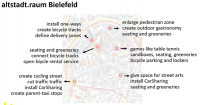
Bielefeld employed a multi-approach evaluation on the pilots in autumn 2021 using interviews with by-passers, specific surveys for retailers as well as residents and a survey for the general public using the project own website. Altogether, more than 5.000 persons gave their opinion to the pilot measures. The results of the evaluation were used for minor adaptations to the activities but mainly to drive further workshops that discussed and concluded the activities most suitable for a permanent change.
All in all, Bielefeld employed 19 steps as workshops, site visits and surveys for the project to run a co-creative process for the change of the old town area. Today, pilots are ended preliminary for traffic counts before a definite decision on what changes become permanent takes place.
While workshops and surveys were used by our Finnish partner, the City of Turku, as well during its Summer Street experiment, local communication took an additional dimension: during the two-month pilot of closing a 100m strip of inner-city road Kristinaankatu, retailers and gastronomists of that section teamed up to promote themselves and their offers by an own Instagram account. Exactly retail and gastronomy was the stakeholder group that gave the most positive feedback on the pilot, asking for a renewal in coming years but as well for a stronger influence on the equipment used in the street. Click HERE to read details on the Summer Street experiment in Turku!
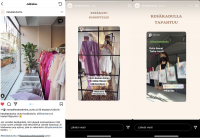
A very personal approach to local communication was taken by our Estonian partner, the City of Valga. At their small-scale activity, the local team planned to get in touch with people since they lacked interest in involvement until then. Therefore, the local team did works on the installation of public space use in the Vabaduse Street itself as much as possible: placing flowerpots, greeneries, traffic signs and movable trees. During the two days of installation, the team got many possibilities and occasions to discuss the intervention with residents, retail and gastronomy as well as other stakeholders present in the Vabaduse Street. And with by-passers asking for what’s going on. The presence of the team during these two days – and at a later point once more to place the movable trees, proved an efficient idea for a local communication actions: Discussions and explanations created a wider understanding of the city’s activities and the Valga team itself gained valuable knowledge on the views and needs of the stakeholders.
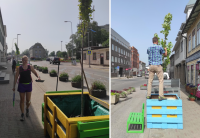
All in all, we made use of a rather diverse set of local communication actions: we used polls, surveys, workshops, site visits, ideations, stalls, co-creative actions and also saw private initiatives to communicate on what’s going on. And we have not stopped to communicate yet – such as our partner city Guía de Isora currently evaluating its latest action on workshops in 7 educational centres. Stay tuned!

